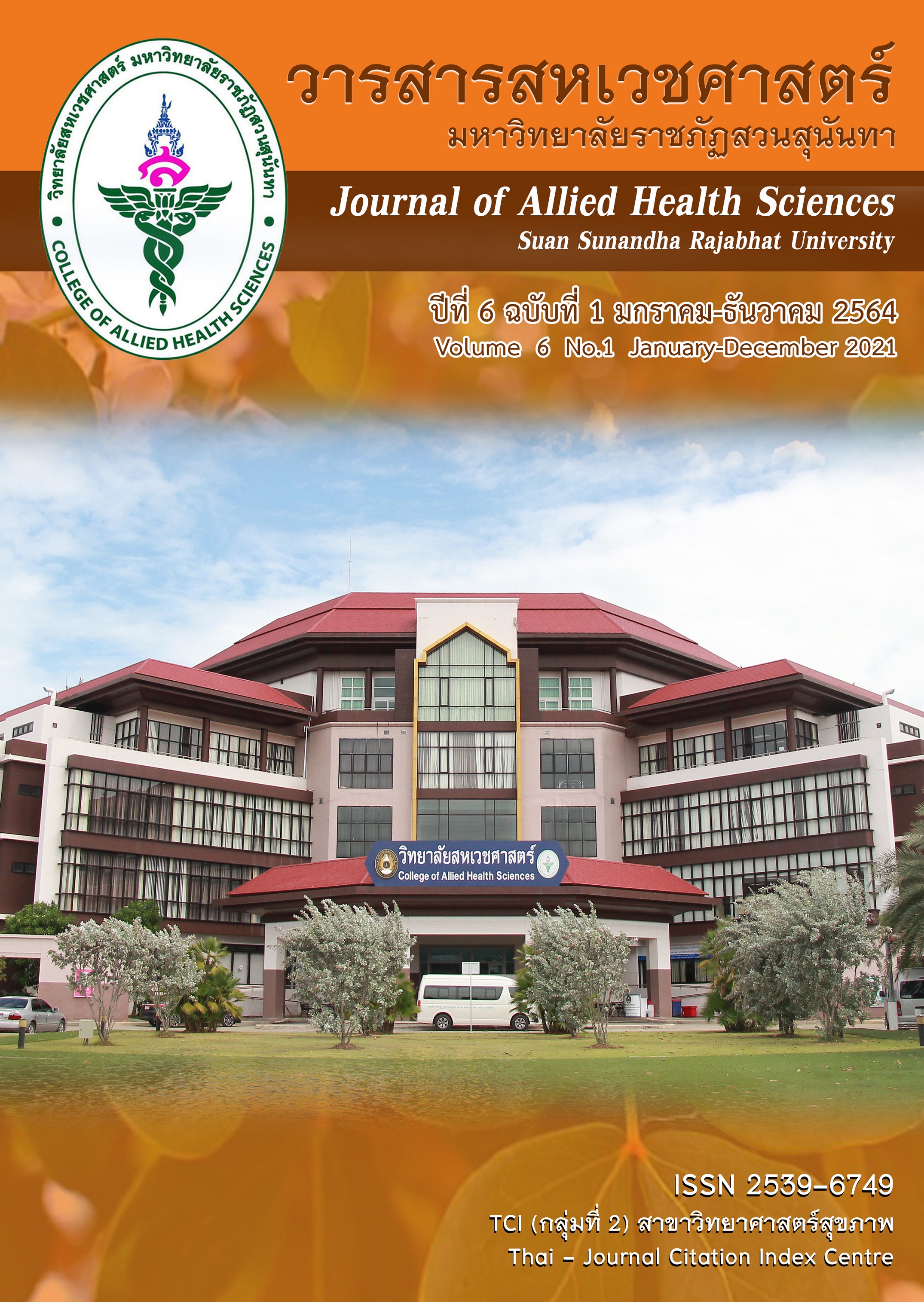การพัฒนารูปแบบการวางแผนจำหน่ายหญิงตั้งครรภ์ ที่มีภาวะเจ็บครรภ์คลอดก่อนกำหนด โรงพยาบาลอำนาจเจริญ Development of a Discharge Planning Model for Pregnant Women with Preterm Labor, Amnatcharoen Hospital
Main Article Content
บทคัดย่อ
การวิจัยนี้มีวัตถุประสงค์เพื่อพัฒนาและศึกษาผลลัพธ์การพัฒนารูปแบบการวางแผนจำหน่ายหญิงตั้งครรภ์ที่มีภาวะเจ็บครรภ์คลอดก่อนกำหนด กลุ่มตัวอย่างคัดเลือกแบบเจาะจง ได้แก่ หญิงตั้งครรภ์ที่ได้รับได้รับการวินิจฉัยจากแพทย์ว่ามีภาวะเจ็บครรภ์คลอดก่อนกำหนด และเข้ารับการรักษาที่ห้องคลอด จำนวน 60 คน แบ่งเป็นกลุ่มควบคุม จำนวน 30 คน กลุ่มทดลอง จำนวน 30 คน กลุ่มควบคุมได้รับการพยาบาลตามปกติ กลุ่มทดลองได้รับการพยาบาลตามปกติร่วมกับการใช้รูปแบบตามกรอบ M-E-T-H-O-D และพยาบาล
ในห้องคลอด จำนวน 13 คน ดำเนินการระหว่างตุลาคม 2561 ถึงกันยายน 2562 เครื่องมือที่ใช้ในการเก็บข้อมูล ประกอบด้วย 1) เครื่องมือดำเนินการวิจัย ได้แก่ รูปแบบการวางแผนจำหน่ายตามกรอลแบบ M-E-T-H-O-D 2) เครื่องมือเก็บรวบรวมข้อมูล ประกอบด้วย แบบสอบถามความรู้ของหญิงตั้งครรภ์ แบบสอบถามความคิดเห็นของพยาบาล แบบประเมินความพึงพอใจของหญิงตั้งครรภ์ ทดสอบความเชื่อมั่นแบบสอบถามโดยใช้สัมประสิทธิ์แอลฟาของครอนบาค ได้ค่าความเชื่อมั่นเท่ากับ .85, .90, และ .76 ตามลำดับ วิเคราะห์ข้อมูลด้วยสถิติ
เชิงพรรณนา การทดสอบค่าทีและไคสแควร์ ผลการวิจัยพบว่า รูปแบบฯ ที่พัฒนาขึ้น ประกอบด้วย กิจกรรม
ตามกรอบ M-E-T-H-O-D, ให้ความรู้, สอน สาธิต และฝึกทักษะประเมินการหดรัดตัวของมดลูกด้วยตนเอง,
แจกแผ่นพับ, แจกวงล้อมหัศจรรย์ และติดตามเยี่ยมทางโทรศัพท์ ด้านผลลัพธ์การใช้รูปแบบฯ พบว่า ความพึงพอใจ
ของหญิงตั้งครรภ์ที่มีต่อรูปแบบฯ โดยรวมอยู่ในระดับมากสุด ( = 4.62, S.D. = 0.31) ความคิดเห็น
ของพยาบาลวิชาชีพต่อรูปแบบฯ โดยรวมอยู่ในระดับมาก ( = 4.44, S.D. = 0.35) กลุ่มทดลองมีอายุครรภ์เฉลี่ยเมื่อคลอดมากกว่ากลุ่มควบคุมอย่างมีนัยสำคัญทางสถิติ และอัตราการกลับมารักษาซ้ำของกลุ่มทดลองน้อยกว่ากลุ่มควบคุมอย่างมีนัยสำคัญทางสถิติ
This research aimed to develop and investigate the outcomes of a discharge planning model for pregnant women with preterm labor. The subjects were 60 patients who were admitted to the labor room. They were divided into 2 groups. The 30 pregnant women
in the control group received usual nursing care and the 30 pregnant women in the experimental group received usual nursing care plus D-method discharge planning model and 13 nurses.
The research was conducted from October 2018 to September 2019. Data collection instruments consisted of 1) research instruments which were the discharge planning model
2) data collection instruments, namely the questionnaire on the knowledge of pregnant women, the questionnaire on the nurses’ opinions and the pregnant women’s satisfaction assessment form. The instruments were tested by Cronbach's alpha coefficient with the reliability value
of .85, .90, and .76 respectively. The data were analyzed by descriptive statistics, paired t-test and chi-square. The results of the study showed that the developed discharge planning model for pregnant women with preterm labor consists of; nursing activities based on the M-E-T-H-O-D conceptual framework, providing knowledge about preterm labor, teaching, demonstrating and practicing self-assessment of uterine contractions, distributing the brochure, allocating
a miracle wheel, and following up by phone. As for the results of using the model, it was found that the overall satisfaction of this care model from pregnant women was at the highest level ( = 4.62, S.D. = 0.31). The overall opinion of the registered nurses on the discharge planning model was high level ( = 4.44, S.D. = 0.35). The mean gestational age of the experimental group was higher than that of the control group with statistical significance. In addition,
the readmission rate of the experimental group was lower than that of the control group
with statistical significance.

